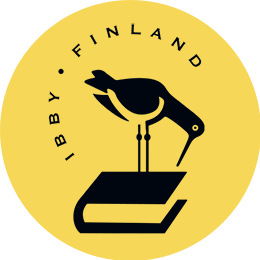Some Words about Diversity in Children’s Literature

Written by: Alexandra Salmela
Every society is diverse, as it has been throughout the history, although possibly in a different manner than nowadays. What is really growing rapidly, is the need to bring the diversity into light – inclusively. To feel at home in the society, it is necessary to see a reflection of oneself in art. As one can find herself/himself pictured, s/he knows s/he is seen by others, too and thus, not invisible, non-existent.
Literature has a great power to give voice to different kinds of individuals. For a child reader, it is important to be able to identify herself/himself with positive characters. Also, following various types of characters acting in familiar situations makes it easy to accept their existence, embrace the similarities rather than get distracted about the differences. Thus, children’s literature needs stories featuring a large scale of characters with diverse backgrounds – ethnical, cultural, social, gender, family, etc… as well as those challenged with physical and mental health issues. Even more, children’s literature should show that any kid can become not only a protagonist’s best friend but a protagonist her/himself.
Certainly, this does not mean that authors should struggle to avoid even mentioning traditional core family siblings going to their grandmother’s place in the countryside by car (daddy driving, mummy sitting at the front seat next to him), barbecueing sausages and wondering about cows and tractors, and instead force themselves into devising complicated constructs of diversions (sic! from what?) and challenges close to absurd. Getting as far as possible from a conservative illusion of a norm should not become a goal (eg. a new norm, a caricature of itself), but it is important to keep in mind, that for different reasons, a growing number of children cannot or do not want anymore to fit in what is still considered normal.
((Now, I can see my son examining the median wage statistics and bursting into laughter as, in his words, we are so bloody poor because adults in our family are proudly ranking the bottom three of the table: the unemployed, the students and the others. It is great that some gain strenght from being different but for some, it is still a source of trauma and shame.))
In my opinion, the presence of ethnical diversity in Finnish children’s literature is getting stronger and stronger. Literature for young adults deals with gender and sexual orientation issues laudably. Now, remarkable steps towards breaking the shame sprouting from poverty, unusual family models or mental health problems are to be taken. Literature field is waiting for authors of different backgrounds and from different sub/cultures, that would write about their reality as insiders. And no, I’m not talking about cultural or whatever appropriation, absolutely not banning authors from approaching any topic from outside.
Because, diversity should not be a topic of itself, a strange thing to pertract or underline anymore, but something very natural, as organic part of literature as it is of life.